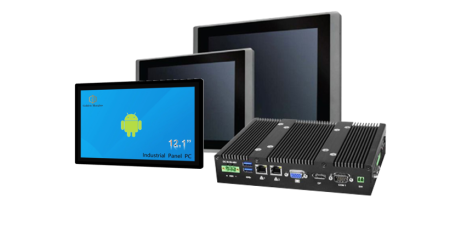Since its introduction, touchscreen technology has evolved far beyond a basic input tool. It now serves as the “intelligent hub” of human-computer interaction. This technology brings far more than intuitive operation and space efficiency—it offers structural reliability, adaptability to extreme environments, tailored solutions for specialized markets, and a foundation for future multimodal interaction. Below, we explore the key strengths of touchscreens across five dimensions: user experience, core technologies, industrial durability, vertical industry applications, and future trends.
I. Foundational Interactive Advantages: Intuitive, Efficient, Reshaping the User Experience
The rapid adoption of touch screens stems primarily from the unprecedented intuitiveness and response efficiency they offer.
1. Natural Interaction, Zero Learning Curve
Users can directly control on-screen content with taps, swipes, pinches, and other gestures without any specialized training, achieving a “what you see is what you get” interactive experience. This natural mode of operation became the fundamental driver of its explosive growth in fields like smartphones.
2. Integrated Input and Output, Simplifying Device Architecture
Touch screens combine input and output functions into a single unit, eliminating the need for traditional peripherals like keyboards and mice. This not only simplifies the hardware structure but also enhances the overall reliability of the system.
3. Space Saving and Efficiency Gains
In environments like industrial controls or retail points of sale, touchscreens enable compact, minimalistic designs. Their open-frame structure also supports easier integration and maintenance. For example, in retail and food service, touchscreens speed up checkout times. Similarly, in industrial settings, user-friendly interfaces help workers complete tasks faster, even under challenging conditions.
II. Technical Path Selection: Tailored to Scenarios, Each Excelling in its Field
Touch screens are not a single technology. Different technical paths—capacitive, resistive, surface acoustic wave (SAW), and infrared (IR)—each offer unique advantages suited to specific application scenarios.
1. Capacitive Touchscreens: Synonymous with Sensitivity and Multi-Touch
Capacitive screens sense the electrical current from the human body to enable touch, support multi-touch, and feature high sensitivity and excellent light transmission. People widely use them in consumer electronics and high-end industrial control and medical devices. The emergence of Projected Capacitive (PCAP) technology, in particular, allows operation with gloved hands, further expanding its industrial application scenarios.
2. Resistive Touchscreens: An Economical and Practical Industrial Choice
Resistive screens rely on pressure for activation, allowing use with fingers, gloved hands, or styluses. Their low cost, simple structure, and good dust and water resistance keep them relevant in environmentally challenging or budget-conscious industrial control scenarios.
3. Surface Acoustic Wave and Infrared Technologies: Built for Public Environments
Surface Acoustic Wave screens offer excellent image clarity and scratch resistance, making them common in high-reliability scenarios like ATMs and public information kiosks. Infrared screens use a grid of infrared beams for detection, provide extremely high image transmission quality, work with wet or dirty gloves, and have virtually unlimited touch life, making them ideal for large interactive whiteboards or digital signage.
No single technology holds absolute superiority; each has its applicable boundaries. The key lies in selecting the most suitable technical solution based on the specific needs of the application—such as operating method, environmental conditions, and cost budget.
III. Conquering Harsh Environments: Structural Reinforcement and Optical Breakthroughs
In industrial, outdoor, and public service environments, touch screens require durability and visibility far beyond conventional standards.
1. Industrial-Grade Design, Unfazed by Extreme Conditions
Industrial-grade touch screens incorporate infrared illumination and reinforced glass housings to withstand vibrations, impacts, liquid spills, oil, dust, and other harsh conditions. For example, electric vehicle (EV) charging station screens must operate reliably within a temperature range of -40°C to +50°C.
2. Top-Tier Impact Protection: The Value of IK10
IK10 represents the highest level of mechanical impact protection, meaning the equipment can withstand an impact energy of 20 joules. This is crucial for public devices like charging stations. It ensures user safety by preventing exposure to high-voltage components and significantly reduces the total cost of ownership by minimizing repair frequency.
3. Optical Bonding: Combining Clarity and Ruggedness
Optical bonding technology uses high-transparency adhesives to fill the air gaps between the screen layers, delivering two core enhancements:
- Readability Under Sunlight: By matching refractive indices, it drastically reduces light reflection, maintaining excellent screen contrast even in bright environments. Combined with high-brightness backlights, outdoor visibility improves dramatically.
- Structural Reinforcement and Environmental Sealing: The adhesive layer acts as a shock absorber, enhancing resistance to vibrations and impacts. Simultaneously, the fully bonded structure prevents moisture and dust ingress and effectively eliminates condensation, ensuring long-term stable operation in damp environments or those with large temperature variations.

IV. Vertical Industry Applications: Customized Solutions Creating High Added Value
Across different industries, deeply customized touch screens have become key enablers for boosting efficiency, ensuring safety, and even generating revenue.
1. Smart Automotive: Haptic Feedback Ensures Driving Safety
As physical buttons in vehicles gradually give way to touch screens, haptic feedback technology simulates the feel of physical buttons. This allows drivers to perform “blind operations,” minimizing the time their eyes stray from the road and greatly enhancing driving safety.
2. Smart Healthcare: Hygiene and Reliability Combined
Medical-grade touchscreens feature seamless, sealed surfaces that facilitate frequent disinfection, effectively preventing cross-contamination. They also comply with stringent medical device safety standards, and their clear, intuitive interfaces help medical staff quickly access critical information.
3. Industrial and Public Service: Durability and Monetization Potential
In industrial automation, touchscreens operate reliably amidst dust, vibrations, and extreme temperatures, ensuring production continuity. In public service terminals (e.g., charging piles, self-service kiosks), large screens not only meet ergonomic and accessibility standards but can also host digital advertising, creating an additional revenue stream for operators.
V. Future Trends: Multimodal Fusion and Form Factor Innovation
The future of touchscreens extends beyond mere touch input, evolving towards a more intelligent and diverse interactive ecosystem.
1. The Intelligent Hub: Multimodal Collaborative Interaction
Future touchscreens will act as coordination centers for various interaction modes like voice, gesture, and eye tracking. Integrated with artificial intelligence, the system can intelligently discern user intent and seamlessly switch between the most suitable interaction mode based on the context, delivering a smoother, more natural experience.
2. Flexible Displays: Breaking Form Factor Boundaries
Flexible screens, based on bendable, foldable materials like polyimide films, offer greater design freedom for devices. From curved displays to stretchable screens, flexible technology is pushing towards the vision where “any surface can become a screen,” vastly expanding the possibilities for interaction.
3. Transparent Displays: New Experiences in Blending Virtual and Real
Transparent screens overlay digital information onto the physical world and have been successfully deployed in scenarios like museum exhibits and smart retail. They serve not only as windows for information but also as crucial interfaces connecting the virtual and real worlds.
VI. Conclusion: Strategic Vision Determines Future Competitiveness
The comprehensive advantages of touchscreen technology are reflected across multiple layers: user experience, technical performance, structural reliability, optical quality, and strategic value. Facing the future, relevant enterprises should focus on three strategic directions:
-
Invest in High-Value-Added Technologies: Increase investment in cutting-edge technologies like optical bonding, haptic feedback, and flexible displays, and penetrate high-value verticals like automotive and healthcare to build differentiated advantages.
-
Build a Multimodal Interaction Ecosystem: Promote the integration of touchscreens with AI, voice, gesture control, and other technologies, transitioning from being hardware suppliers to comprehensive solution providers.
-
Focus on Long-Term Total Value: In industrial and public infrastructure projects, prioritize touchscreen products with high reliability and long service life. By reducing maintenance costs and downtime, a superior return on investment can be achieved over the total cost of ownership.
Touchscreen technology is already deeply embedded in every corner of our lives, and its evolution is far from over. As technology and applications continue to converge, it is destined to remain a central driving force in our digital and intelligent future.
We hope you found these touchscreen or panel PC fundamentals informative. Goldenmargins offers a broad selection of Industrial Touchscreen Monitors and Touch Panel PCs in various sizes and configurations, including medical touch screens, sunlight-readable touch screens, open-frame touch screens, and waterproof touch panels, as well as other unique touch screen or panel PC designs. You can learn more about our services HERE or by calling us at +86 755 23191996 or sales@goldenmargins.com





